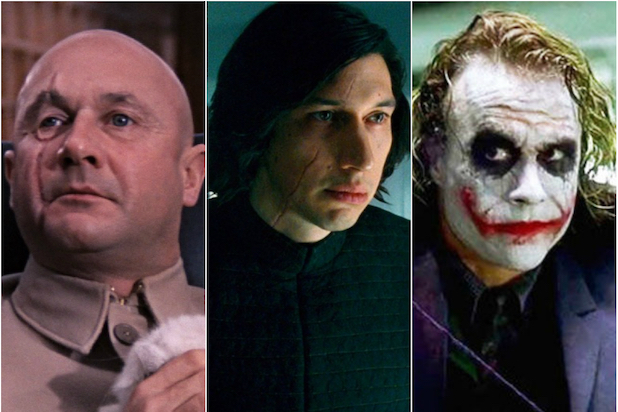Get ready for another look at Joaquin Phoenix’s Joker this Wednesday
The British Film Institute recently announced that it would no longer be funding movies that feature villains who have facial scars, burns or disfigurements. It’s in support of a charity campaign called #IAmNotYourVillain, which wants to change the stigma that people with facial differences should be seen as ugly, wrong, unnatural, or in the case of many films, evil. It’s a negative representation that shows up more often than you think among movie villains because it’s an easy visual way of showing that a character is different or menacing. Here are some famous examples that use this trope.
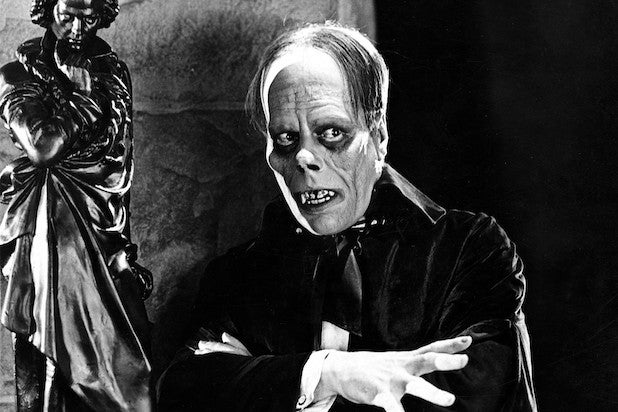
“The Phantom of the Opera”
The movie-villains-with-scars trope dates all the way back to the silent era, when silent film star and make-up artist Lon Chaney earned the nickname “The Man of a Thousand Faces.” Chaney frequently portrayed characters with disfigurements or characters depicted as grotesque or monstrous, including “The Phantom of the Opera” (1925) and “The Hunchback of Notre Dame” (1923).
Universal
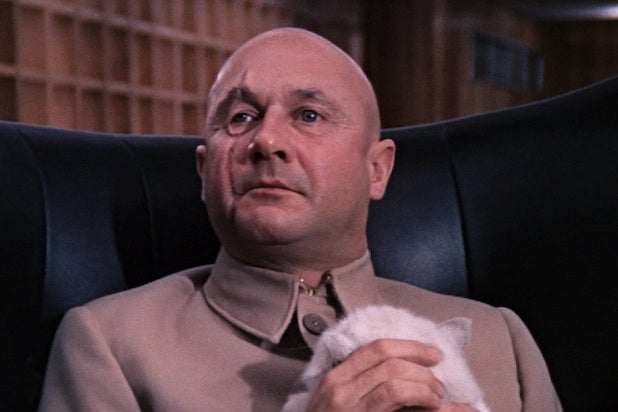
Ernst Stavro Blofeld – “You Only Live Twice”
Ernst Stavro Blofeld, as portrayed with a massive scar down his forehead and past his eye by actor Donald Pleasence, kicked off the James Bond franchise’s long history with facial scars, including Alec Trevelyan from “Goldeneye” and Le Chiffre from “Casino Royale,” whose nervous tick is that he sometimes cries blood. It became such a cliche that when “Austin Powers” parodied the spy-movie genre, its villain, Dr. Evil, naturally had to have a facial scar of his own.
United Artists
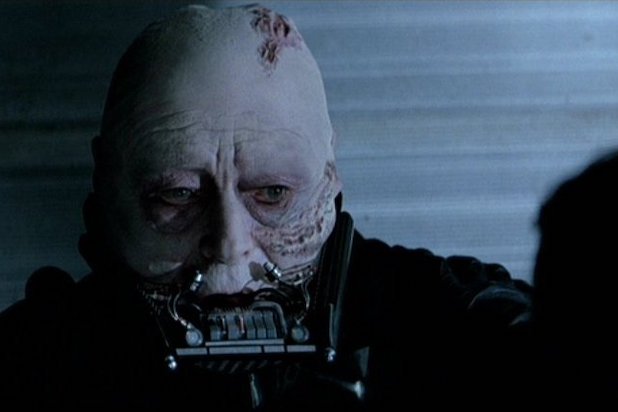
Darth Vader (Anakin Skywalker) – “Star Wars: Episode VI – Return of the Jedi”
When Darth Vader removes his mask to look upon Luke with his “own eyes” as Anakin Skywalker, we see a withered old man, scarred and pale, to represent having become more machine and monster than man.
Lucasfilm
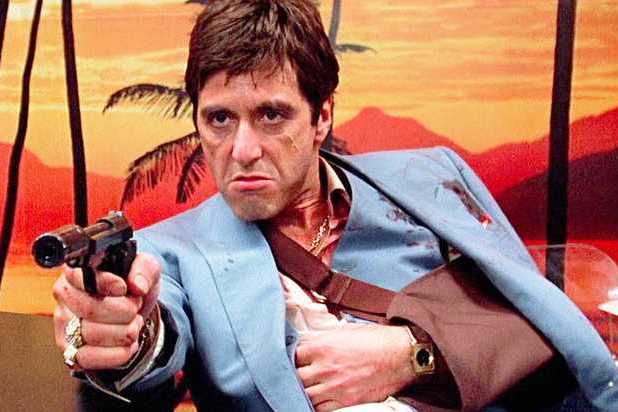
Tony Montana – “Scarface”
Tony Montana got his scar from a fight he got into as a kid, he explains to an immigration officer, and not, as was suggested, by “eating p—.” “You should see the other kid,” Tony says in the film. “You can’t recognize him.
Universal Pictures
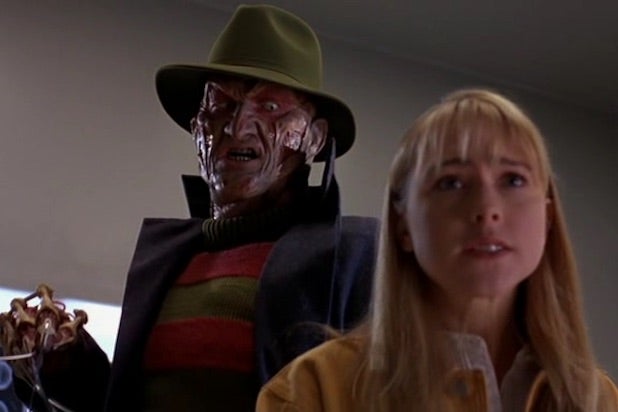
Freddy Krueger – “The Nightmare on Elm Street”
Michael Myers and Jason Voorhees are plenty scary while wearing masks, but Freddy Krueger’s terrifying selling point – aside from his ability to murder children in their sleep with knives for hands – is that his face has been horribly burned and disfigured.
New Line Cinema

Kakihara – “Ichi the Killer”
Takashi Miike’s hyper-violent cult film features its scarred protagonist, Kakihara, as a sadomasochist who tortures and hunts down a rival Yakuza boss. Miike’s considerably controversial film, which was banned in several countries, has enough problems as it is, though, without considering the scars.
Media Blasters

The Joker – “The Dark Knight”
The Joker gets a lot of mileage out of his scars in “The Dark Knight,” telling two contradicting backstories about how he received them, feeding into the mystique and manipulating nature of his character. And The Joker isn’t the only one, because the evil turn of Harvey Dent is symbolized with half his face burning off as he transforms into the villain Two Face.
Warner Bros.

Richard Harrow – “Boardwalk Empire”
Jack Huston’s character in “Boardwalk Empire” is a war veteran who suffered his facial deformity in battle. He’s soft-spoken and timid, always hiding his face behind a mask that covers all but the corner of his mouth, designed to look like his old visage. He’s one of the HBO drama’s most tender and likable characters, but also its most ruthless killer.
HBO
Miles Quaritch – “Avatar”
The colonel from James Cameron’s “Avatar” mentions that he received his facial scar from battling a beast on the Na’vi home planet of Pandora, which only feeds his hatred and racism toward the native civilization.
Twentieth Century Fox
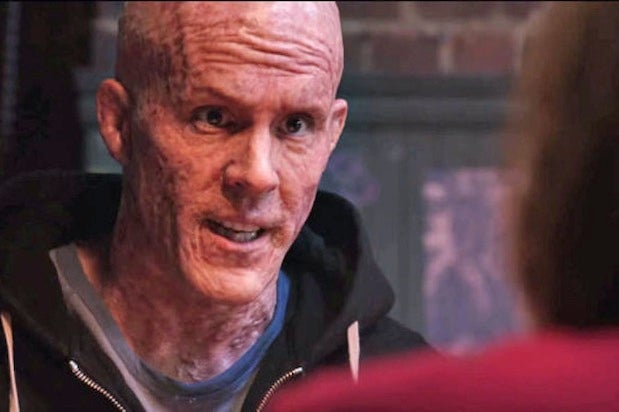
Deadpool – “Deadpool”
“Looks ARE everything,” Ryan Reynolds’ Wade Wilson says in “Deadpool.” “Ever heard Dave Beckham speak? It’s like he mouth-sexed a can of helium. You think Ryan Reynolds got this far on a superior acting method?”
Twentieth Century Fox
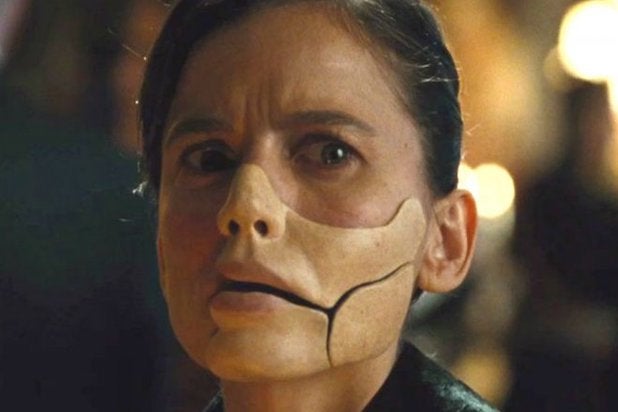
Dr. Poison – “Wonder Woman”
Actress Elena Anaya said in an interview that her character Dr. Maru – a.k.a. Dr. Poison – melted the corner of her face off when she tested her own experimental gas on herself. Anaya said the idea generated from director Patty Jenkins. “This is the sadistic side of Dr. Maru,” Anaya said. “She’s obsessive. She’s a maniac. And she doesn’t care about her face. It’s not important to her. She just doesn’t want attention.”
Warner Bros.
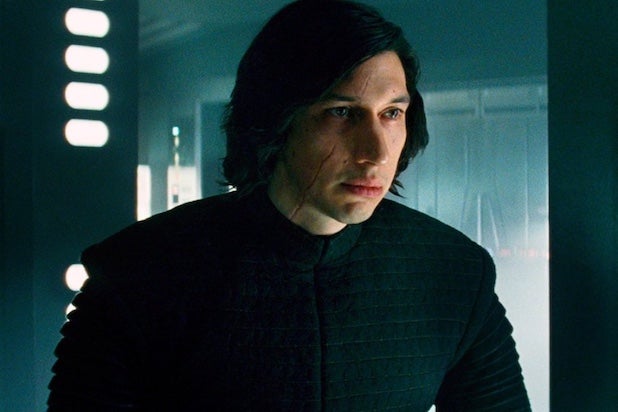
Kylo Ren – “Star Wars: Episode VIII – The Last Jedi”
Kylo Ren receives his facial scar after his battle with Rey at the end of “The Force Awakens,” though people were more upset about how that scar may have moved across his face in between movies.
Walt Disney Pictures

Thanos – “Avengers: Infinity War”
“Infinity War” doesn’t fully explain how Thanos got the three scars on his face, though it hasn’t stopped fans from speculating as to how the purple overlord received them, whether from birth or self-inflicted. Though it does vaguely look like the handiwork of Wolverine.
Marvel Studios
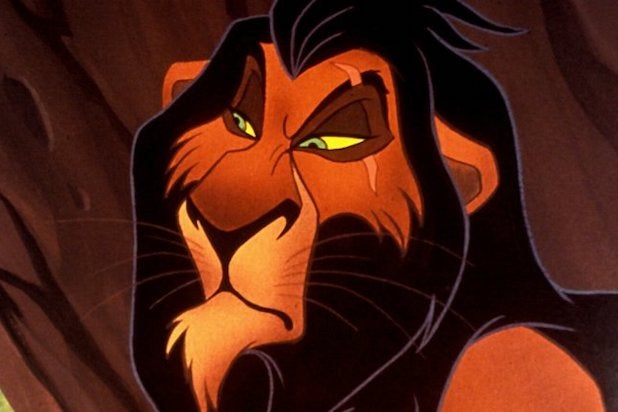
Scar – “The Lion King”
Well duh, Scar is his name. You think his appearance has anything to do with his character?
Walt Disney Pictures
Old film trope promotes stigma about people with facial differences
The British Film Institute recently announced that it would no longer be funding movies that feature villains who have facial scars, burns or disfigurements. It’s in support of a charity campaign called #IAmNotYourVillain, which wants to change the stigma that people with facial differences should be seen as ugly, wrong, unnatural, or in the case of many films, evil. It’s a negative representation that shows up more often than you think among movie villains because it’s an easy visual way of showing that a character is different or menacing. Here are some famous examples that use this trope.
Source: Read Full Article
